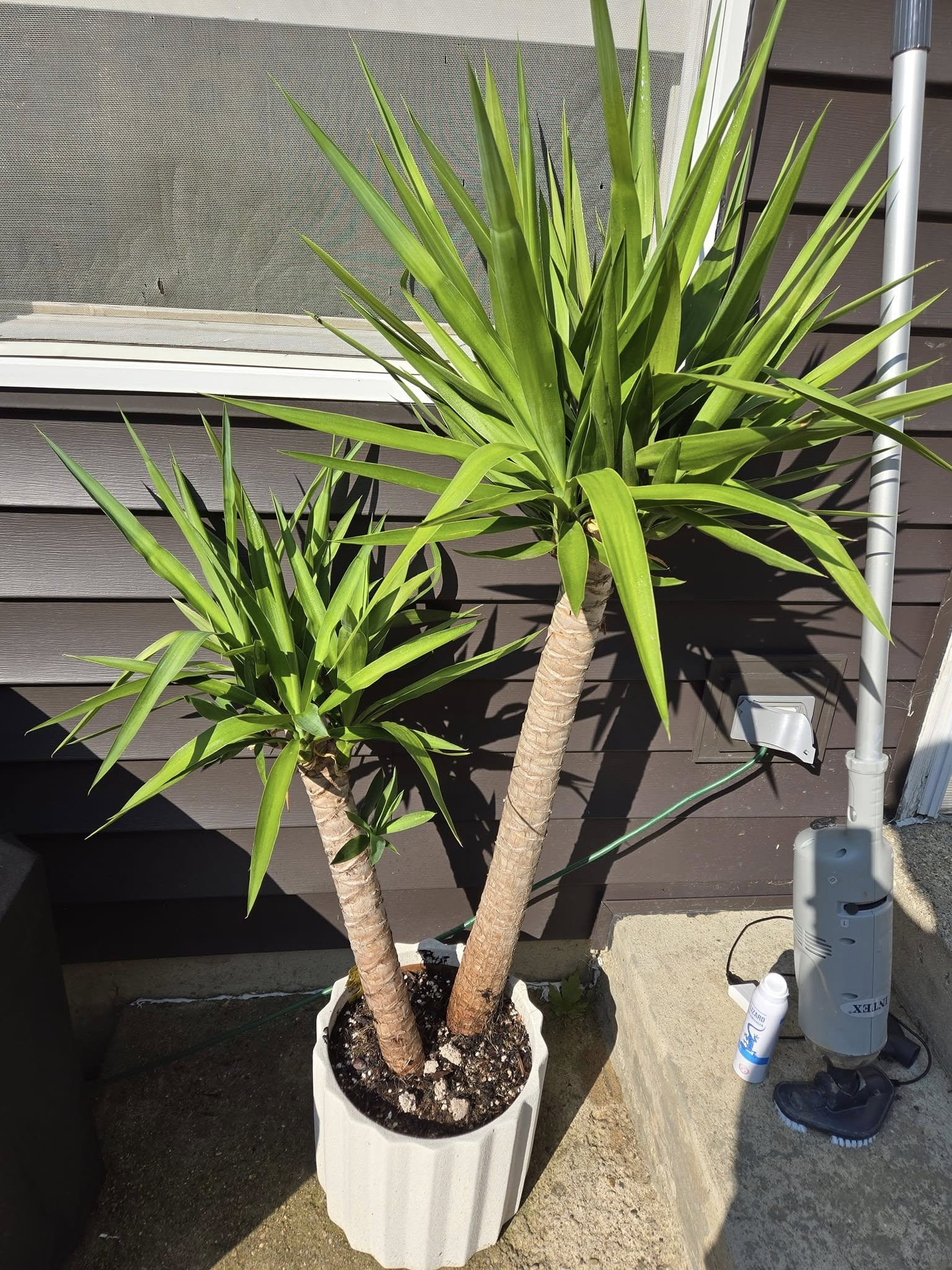
The majestic yucca plant, with its sword-like leaves and architectural form, adds a touch of desert chic to any space. But for beginners, the prospect of growing this exotic beauty can be daunting. This guide will equip you with the knowledge to transform a spiky seedling into a statuesque wonder, thriving in your home or garden.
Planting Power: Setting Your Yucca Up for Success
Whether you’re starting with a seed or a young plant, understanding the yucca’s needs is key.
Seeding Success:
- Germination Magic: Yucca seeds require warm temperatures (around 70°F) for germination. Sow seeds in a well-draining seed starting mix, keeping the soil consistently moist but not soggy. Patience is a virtue; germination can take several weeks.
- Light Up Their Lives: Once the seedlings sprout, provide them with bright, indirect light. A sunny windowsill is ideal.
Potted Perfection:
- Choosing the Right Container: Select a pot with drainage holes to prevent root rot. Yucca roots don’t require a lot of space, so a pot only slightly larger than the root ball is sufficient. Clay pots offer excellent drainage, but plastic pots are lighter and retain moisture slightly better.
Planting Pointers:
- Drainage is King: Ensure the pot has drainage holes, and add a layer of gravel or broken pottery shards to the bottom of the pot to promote good drainage.
- Soil Matters: Use a well-draining potting mix formulated for cacti and succulents. These mixes are light and airy, allowing for proper oxygen flow to the roots.
- Planting Position: Gently position your yucca plant in the pot, ensuring the root ball sits slightly above the soil line. Backfill with the potting mix, firming it gently around the base of the plant.
Yucca TLC: A Recipe for Plant Bliss
Once planted, your yucca needs a little TLC to thrive. Here’s how to keep your spiky friend happy and healthy.
Light and Location:
- Sun Seekers: Yuccas are sun-loving creatures. Aim for at least 6-8 hours of bright, indirect sunlight per day. South-facing windows are ideal, but east or west-facing windows with adequate light can also work.
- Rotate for Balance: To encourage even growth, rotate your yucca plant every few weeks. This ensures all sides receive sufficient sunlight.
Watering Wisely:
- Hydration Heroes: Yucca plants are drought-tolerant. Overwatering is a leading cause of problems. Allow the soil to dry completely between waterings. During the summer months, you might need to water your yucca once a week, but adjust the frequency based on the climate and pot size. Less is definitely more with yuccas!
- Winter Woes: As winter approaches and the days shorten, watering needs decrease significantly. Water your yucca only when the soil feels bone dry to the touch.
Feeding Frenzy (Not Really):
- Less is More: Yucca plants are not heavy feeders. A light application of a balanced fertilizer once a month during the spring and summer growing season is sufficient. Opt for a diluted solution to avoid burning the roots.
Beyond the Basics: Keeping Your Yucca Thriving
Temperature Talk:
- Heat Seekers: Yucca plants prefer warm temperatures, ideally between 65°F and 80°F. They can tolerate lower temperatures but might experience stunted growth. Protect your yucca from frost or sudden temperature drops.
Humidity Haven:
- Dry Desert Dwellers: Yucca plants are accustomed to dry environments and don’t require high humidity levels. However, if you notice brown leaf tips, you can occasionally mist the plant with water.
Dealing with Drama:
- Common Culprits: Watch out for signs of pests like mealybugs or scale, which can appear as white, cottony masses on the leaves. Treat them with insecticidal soap or neem oil spray. Brown leaves can indicate underwatering, while yellowing leaves might be a sign of overwatering or lack of sunlight. Adjust your watering routine or move the plant to a brighter location.
Repotting Rhapsody:
- Growth Spurts: Young yuccas might need repotting every 1-2 years as they mature. Opt for a pot only 1-2 inches larger in diameter than the previous one. Repotting is best done during the spring or summer growing season.
Life with a Yucca: A Rewarding Partnership
With a little understanding and TLC, your yucca plant will reward you with years of architectural beauty. From a spiky seedling to a statuesque wonder, your yucca will add a touch of exotic elegance to your home or garden. Here are some additional tips to consider:
Propagation Power:
- Spreading the Yucca Love: Yucca plants can be propagated through root division or offsets (pups) that sprout at the base of the mature plant. Root division is best left to experienced gardeners, but propagating from offsets is a fun and relatively simple process.
Here’s how:
Carefully remove the offset from the mother plant using a sharp, sterilized knife.
* Ensure the offset has a small root system attached.
* Pot the offset in a well-draining potting mix appropriate for cacti and succulents.
* Water sparingly and provide bright, indirect light.
* With proper care, your new yucca offset should establish itself within a few weeks
Yucca in the Landscape:
- Outdoor Oasis: Yucca plants can thrive outdoors in warm climates (USDA hardiness zones 7-10). Choose a sunny location with well-draining soil. Once established, they require minimal care, making them ideal for low-maintenance landscaping.
Winter Wonderland (Sort Of):
- Protecting Your Investment: In colder climates, yuccas can be grown as container plants and brought indoors during winter. Choose a bright, cool location and water sparingly.
Living with Pets:
- A Word of Caution: While not considered highly toxic, yucca leaves can cause mild stomach upset in pets if ingested. If you have curious cats or dogs, it’s best to place your yucca plant out of their reach.
